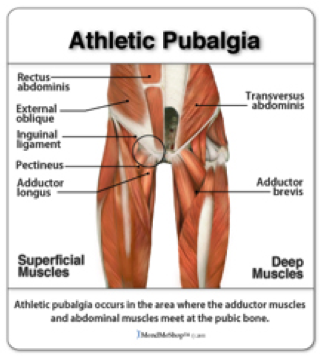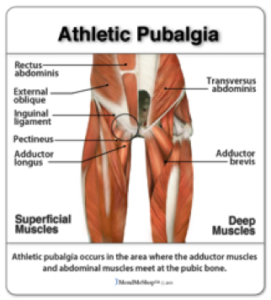 Despite its name, a sports hernia is not an actual hernia. It’s an injury (usually a tear) to a tendon or muscle in your lower abdomen or groin that causes chronic pain. Approximately 5-18% of adult athletes experience sports hernias every year. A better, but lesser known, name for this injury is athletic pubalgia. Athletic pubalgia is often caused by repetitive and forceful twisting of your pelvis.
Despite its name, a sports hernia is not an actual hernia. It’s an injury (usually a tear) to a tendon or muscle in your lower abdomen or groin that causes chronic pain. Approximately 5-18% of adult athletes experience sports hernias every year. A better, but lesser known, name for this injury is athletic pubalgia. Athletic pubalgia is often caused by repetitive and forceful twisting of your pelvis.
What is a hernia?
There are many types of hernias. A hernia occurs when tissue pushes through a muscle wall, causing a bulge. Remember that a sports hernia is not an actual hernia and that is why we are referring to it in the rest of this article as athletic pubalgia.
Where does athletic pubalgia occur?
Athletic pubalgia can occur in the soft tissue of your lower abdomen or groin area. Specific soft tissues that are commonly affected include:
- rectus abdominis (“6-pack”)
- adductor muscles (groin/inner thigh)
- inguinal ligament (hip crease)
- pubic symphysis (where your pubic bones meet)
Athletic pubalgia mechanism of injury
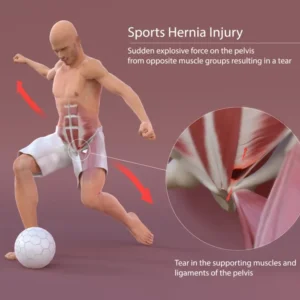 Athletic pubalgia often occurs due to forces that shear the pubic symphysis. Abdominal hyperextension and thigh hyperabduction during activities can strain the muscles and ligaments of the inguinal and pubic regions.
Athletic pubalgia often occurs due to forces that shear the pubic symphysis. Abdominal hyperextension and thigh hyperabduction during activities can strain the muscles and ligaments of the inguinal and pubic regions.
Another mechanism involves progressive micro-tearing of the rectus abdominis at its insertion point on the pubic bones. Repetitive stress from athletic movements can lead to weakening and damage of the muscle fibers.
Sports that contribute to athletic pubalgia?
Sports that involve repetitive, forceful motions, especially twisting your pelvis, can damage or cause a tear in the soft tissue of your lower abdomen or groin.
- Ice hockey
- Soccer
- Football
- Wrestling
- Rugby
- Skiing & Snowboarding
- Tennis & Pickleball
- Basketball
Note: you don’t have to be an athlete to have this injury, as it can be caused by postural dysfunction and weakness around the pelvic area during normal activities of daily living.
What are the symptoms of athletic pubalgia?
The main symptom of athletic pubalgia is ongoing (chronic) pain in your lower abdomen and/or groin and usually only affects one side and effects males more than females.
- You experience sudden and intense pain at the time of the injury
- The pain is ongoing (chronic) and feels dull or burning
- It’s difficult to pinpoint the exact area of the lower abdomen and groin that the pain is coming from
- The pain radiates downward to your scrotum and/or inner thigh
- You feel pain when you’re exerting yourself, especially when sprinting, twisting, kicking or sitting up
- You feel pain in your groin when you cough or sneeze
- You have to stop participating in your sport or significantly cut back on your physical activity because of the pain
- The pain may go away after you’ve rested, but it comes back during sports activities
How is athletic pubalgia diagnosed?
To diagnose athletic pubalgia, your BTF doctor will do a thorough examination of your symptoms and history and perform a physical exam. They may also have you undergo imaging procedures to either confirm athletic pubalgia or rule out other possible injuries.
What tests are used to diagnose athletic pubalgia?
While there is not a definitive test that diagnoses athletic pubalgia, there is a constellation of findings that highly suggests it:
- complaint of deep groin/lower abdominal pain
- pain that is exacerbated with sport-specific activities such as sprinting, kicking, cutting and/or sit-ups and relieved with rest
- palpable tenderness over the pubic ramus at the insertion of the rectus abdominus
- pain with resisted hip adduction at 45 degrees
- pain with resisted abdominal curl-up
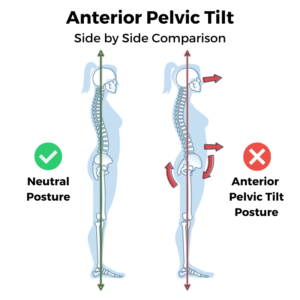 Additionally, most clients that have athletic pubalgia demonstrate postural imbalances, in the form of pelvic misalignments and muscular imbalances, that create force attenuation issues across the abdominal and groin areas. Your BTF doctor is trained to evaluate and treat these postural imbalances.
Additionally, most clients that have athletic pubalgia demonstrate postural imbalances, in the form of pelvic misalignments and muscular imbalances, that create force attenuation issues across the abdominal and groin areas. Your BTF doctor is trained to evaluate and treat these postural imbalances.
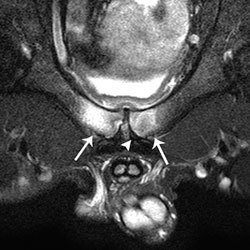
Occasionally, your BTF doctor may have you undergo imaging tests such as x-ray, MRI, ultrasound or a bone scan to confirm the diagnosis and rule of other possible diagnoses. The typical finding on MRI for athletic pubalgia is bone marrow edema of the pubic bone and tearing of the adductor longus and/or rectus abdominus tendinous insertions.
6 quick self assessments for athletic pubalgia
Here are a few quick tests that you can do at home to assess for pain and/or asymmetry in your abdominal/groin region to determine whether or not you might have athletic pubalgia:
- seated figure-4 stretch
- seated hip/knee flexion & internal rotation
- seated 2-fist adductor squeeze
- 1/2-kneeling hip flexor stretch
- oblique sit up
- single leg raise
Quick Self Assessment video:
Surgical treatment options
Surgical intervention may be necessary for severe cases of athletic pubalgia that do not respond to 4-6 weeks of conservative treatment. In some cases, surgeons may use mesh implants to provide additional support and reinforcement to the affected area. This can help prevent recurrence of the injury and facilitate the healing process.
The good news is that non-surgical treatments can often effectively manage this condition, especially if diagnosed early.
The doctors at Back to Function can conduct a comprehensive posture and movement assessment to evaluate muscular imbalances, pelvic alignment, and movement patterns contributing to athletic pubalgia. For the non-surgical management of athletic pubalgia, please see Sports Hernia (Athletic Pubalgia). Part 2.
If you are dealing with abdominal/groin area pain and need to be evaluated by one of our BTF doctors, please contact us at 310-534-1900 or by email at info@backtofunction.com.
Feel – Recover – Perform Better
References:
Kachingwe AF et al. Proposed Algorithm for the Management of Athletes with Athetic Pubalgia: A Case Series. J of Ortho & Sports Phys Ther. Dec 2008.
Ellsworth, AA et al. Athletic Pubalgia and Associated Rehabilitation. the Intl J of Sports Phys Ther. Nov 2014.


